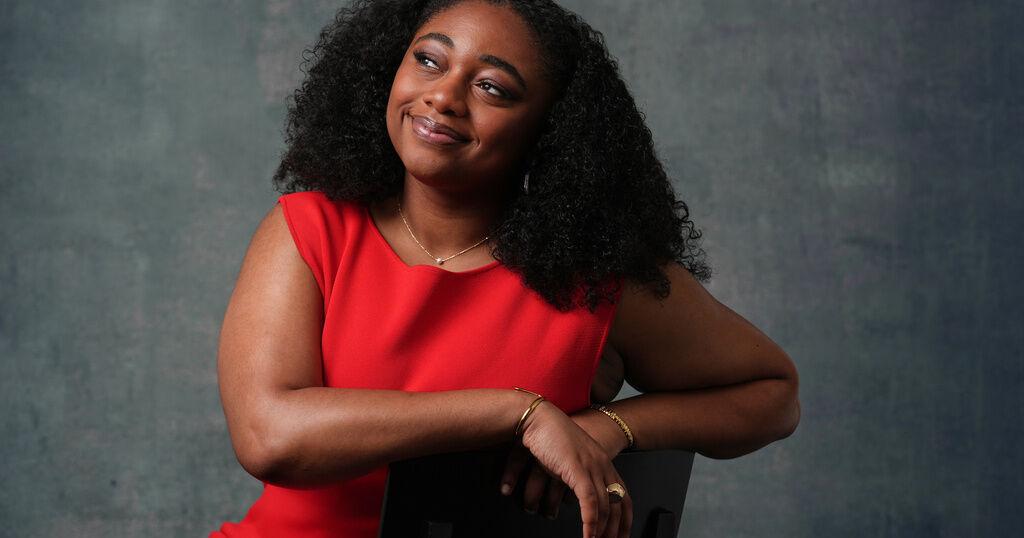Samara Joy reflects on her Grammy wins and the creative journey behind ‘Portrait’

Samara Joy: The Voice Reviving Jazz for a New Generation
LOS ANGELES — Samara Joy’s voice has the ability to transform listeners to the early jazz clubs, filling them with warm nostalgia for legends like Ella Fitzgerald and Sarah Vaughan. At just 25, Joy is a five-time Grammy-winning recording artist, whose album, Linger Awhile, won her Best New Artist and Best Jazz Vocal Album awards in 2023.
Praised by icons such as Chaka Khan, Regina King, and Quincy Jones, Joy has amassed a large following among her Gen-Z peers on TikTok, introducing a new generation to jazz. Last year, she released Portrait, her third and most personal studio album, allowing listeners into the tension between excitement and feeling overwhelmed that often follows a whirlwind of accolades and success.
Her first original song, “Peace of Mind,” fully captures this moment. “I wrote it in a time where I was really questioning whether I could continue or not because I was so exhausted,” said Joy. “I reminded myself through that Sun Ra composition that I have experienced something wonderful, and it doesn’t have to be the end-all, be-all. This is just the beginning… this is just a springboard for all of the other creative ideas that I have and what I feel like I have to offer.”
For Joy, releasing Portrait was a creative challenge and a turning point toward trusting her creative instincts. “It’s taught me a lot about what I can do and to stand firm in the creative vision and the direction that I see for myself,” she said.
Life Post-Grammy Wins and Artistic Growth
Joy sat down with The Associated Press to talk about life after her Grammy wins, how diving into Portrait helped her grow as an artist, and what it means to make her mark on the classic genre. The interview has been edited for brevity and clarity.
How does it feel to look back on Portrait and how have you grown since then?
JOY: This album was a turning point. It was the first time I really had to make a decision about what my path was going to be. With the first two albums, I sang songs I loved and felt I could interpret as my own. But Portrait was the first time I took the reins of creative direction, song selection, and working closely with my bandmates.
Honestly, I opened up even more to my bandmates and encouraged them to arrange and orchestrate this next era. It was a big leap, maybe different from what people expected after my second album and winning Best New Artist. This album taught me the importance of patience — not rushing to stay relevant or spark a moment. It reminded me to take my time and wait until I have something meaningful to say.
What was the moment like when you won Best New Artist?
JOY: I never expected to be nominated, especially so early in my career. Even now, I still remember and feel the emotions of that night. It’s a moment I will never forget, and I’m incredibly thankful to everyone who believed in me — those who voted, listened to my music, and support me now. That’s why I never want to lose sight of why I do this.
You’ve been praised by legends like Chaka Khan and Regina King. Has anyone’s feedback particularly influenced your approach?
JOY: A few years ago, I performed at the Hollywood Bowl during a birthday celebration for Quincy Jones alongside Patti Austin. Backstage, Patti was funny, sharp, and very supportive. Her honesty and encouragement meant a lot, especially coming from someone with such an extensive and successful career collaborating with iconic artists. It encouraged me on this new journey I’m embarking on.
Does being a Black woman at the forefront of jazz feel like an act of reclamation and resistance?
JOY: I hadn’t thought about it that way. I draw inspiration from so many amazing artists — like Billy Strayhorn and Duke Ellington — who contributed to the evolution of jazz. Jazz isn’t mainstream — at least not in its pure form — and that’s part of its beauty.
For me, it’s about authenticity and introducing people to the rich sounds they might not recognize at first. Whether it’s highlighting an Abbey Lincoln song or putting lyrics to a Thelonious Monk composition, I aim to share a different compositional style and voice within jazz. That’s my way of reclaiming the genre and educating a new audience. Good music is good music.
You often get compared to Ella Fitzgerald and Sarah Vaughan. How does that feel?
JOY: I feel honored and sometimes undeserving because my relationship with their music only began relatively recently. I wasn’t exposed to their voices growing up — I discovered them in college. It felt like a whole new world opened up, and I wanted to sing and move people the way they moved me with their incredible voices.
Samara Joy continues to breathe new life into jazz, blending deep respect for its legends with fresh creativity and youthful passion, proving that timeless music can speak across generations.









